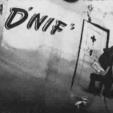Well it seems the Air Force wants to do a mod to a new "E-model" standard for the PTN T-6s. (Navy has T-6Bs, Beech sells T-6C, Army has T-6Ds)
From the RFI:
The United States Air Force is interested in assessing industry’s capability and technical maturity in modifying up to eight T-6As to integrate the following capabilities on a temporary basis to demonstrate evolutionary training/learning procedures.
We ask that any interested potential vendors specifically address each numbered capability with a Technology Readiness Level (TRL) along with substantiating data and estimated schedule to field each capability. Additionally, we are interested in airworthiness certification, cybersecurity, and spectrum certification strategies. Please include all of your assumptions in these strategies.
1. Generic Inflight weapons employment simulation (air-to-air and air-to-ground) including fully integrated sensor fusion
a. 5th Gen style Helmet / HUD symbology
b. Gun (20, 25, and 30 mm) – air-to-air and strafe
c. Targeting/ISR sensor simulation and management (radar, FMV, infrared, radar warning)
d. Unguided weapons (general purpose, rockets)
e. Guided missiles (heat-seeking, radar)
f. Laser-guided air-to-ground weapons (rocket, bomb, missiles)
g. GPS-guided air-to-ground weapons/Inertially-aided munitions
h. Retaskable after launch munitions (e.g SDB, JASSM-ER, etc)
2. Helmet mounted cuing system (HCMS) (objective) or fully integrated Heads-up-Display (HUD) (threshold)
a. 5th Gen style Helmet/HUD symbology fully compatible with capabilities listed in item 1 above
b. Simulation of sensors (radar, infrared, radar warning)
c. Sensor displays (attitude, altitude, airspeed, TCAS/ADS-B)
d. Simulated target display (air-to-air and air-to-ground)
e. Artificial Intelligence and Virtual Construct display capability (fully compatible with datalink
f. Display of GPS flight planned route(s)
3. Enhanced data transfer & sharing: UNCLAS datalink; data & video transfer (msn planning, scenario builds, debrief data [Ops, Safety, & Mx])
a. Mission planning upload to include full mission simulations as a Live Virtual Constructive (LVC) – data transfer device (DTD)
b. Datalink to fully enable LVC missions
1) Sufficient bandwidth to support multiple channels of HD video (Threshold: 3, Objective: 12)
2) High definition video (threshold: 4K, objective 8K)
3) Ground control station to build, execute, monitor and record LVC missions
Range w/gnd station repeaters (T: 40 Nm, O: 60 Nm)
Range w/out repeaters (T: 70 Nm, O: 100 Nm
4) Datalink meets FIPS 140-1 security for FOUO data
c. Ability to adjust LVC scenarios, helmet/HUD displays from rear cockpit or from ground station controls and inject synthetic sensor data and constructed targets (overlaid on geo-rectified sensor “feed” for air-to-ground) to include ability to construct moving ground targets
d. Mission record capability via DTD
1) Operations (HUD/Helmet video, crew biometrics, datalink, 360/cockpit video)
2) MFOQA data
e. Objective: Integrated Bluetooth & Wi-Fi to import external sensors (i.e. view real-time biometrics, helmet data); Threshold (data port for biometrics, helmet data)
f. Power and/or data ports for hand-held equipment (EFB, FIS-B, TIS-B, ATAK)
g. Tactical Situation Display that integrates the simulated radar and weapons cueing/control with real sensor data (LVC, ADS-B [TIS-B], TCAS), the datalink and simulated Radar Warning Receiver with cursor ability to determine target data
4. Hands On Throttle and Stick (HOTAS)
a. Fully compatible with all weapons and sensor simulations
b. Maximum similarity with 5th Generation Fighters
c. Data entry options (e.g. single pilot, left-hand oriented).
5. Night Vision Goggle compatible lighting and displays.
6. Radar Altimeter
7. Ability to display GPS-driven flight plan (Threshold) and Moving Map (Objective)
8. Simulated defensive system (chaff/flare with HOTAS buttons to dispense); captured on mission recording
9. Debriefing system capability that can combine AHRS, LVC and DTD information.
10. 360 degree video record capability (separate from Helmet/HUD) – recordable and datalink
11. Basic Altitude Hold function
12. Fully-coupled, three-axis autopilot
13. Expanded video of front cockpit occupant displayed in the back seat, recorded, and datalink (e.g. supplement biometric data of student)
14. HMD adaptable to accept biometric monitoring capability (recorded parameter)
We request that you also provide your company’s recommendation for existing T-6 capabilities and components whose function can be provided via the components that would be proposed to meet these new capabilities, along with strategies to certify these existing capabilities through the use of these new components. This modification must not negatively impact the existing aircraft flight capabilities. Identify a strategy to verify these existing capabilities remain intact post-modification.





